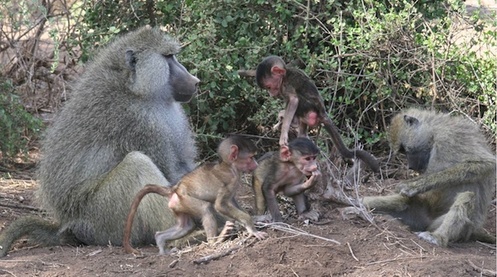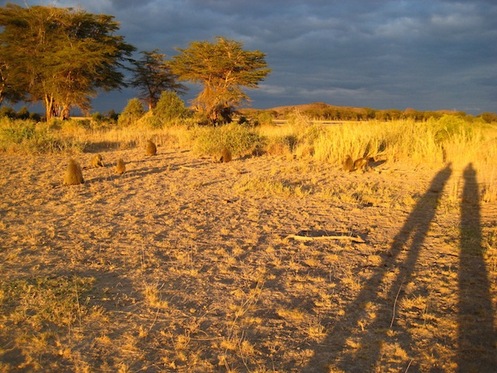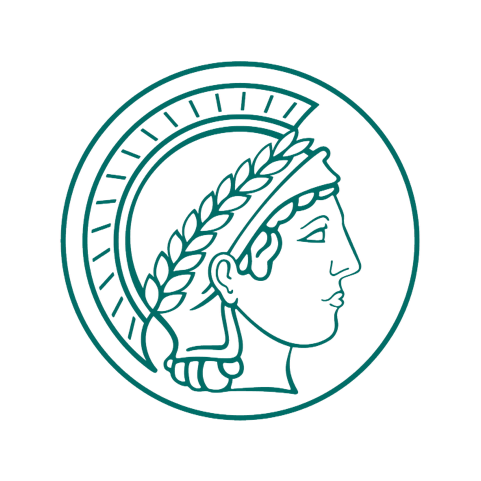
Baboons are one of the most abundant and wide-spread species of monkey in Africa. Baboons are close evolutionary relatives to humans, and on average, baboons and humans have a genetic similarity of 94%. Like many primates, baboons are highly social. They live in social groups of around 20 to 150 animals, including several adult females, adult males, and many offspring. Compared to many other monkeys, baboons are unusual in that, rather than living in trees, they spend most of their waking hours on the ground, ranging across African savannas. Baboons can adapt to a range of habitats, and they eat a wide diversity of foods, including leaves, roots, fruits, seeds, eggs, and insects. Baboons also occasionally hunt and capture rabbits, baby gazelles or small monkeys. Perhaps because of their adaptability, baboons have radiated into several morphologically and behaviorally distinct sub-species, including yellow baboons, olive baboons, chacma baboons, guinea baboons, and hamadryas baboons. Click the links below to learn more about baboon sociality and life histories.
Baboon life histories
Learn about the trajectory of baboons lives, from the cradle to the grave. What is life like for infant and juvenile baboons? When and why do males disperse from their natal group? How long do baboons live? What happens to baboons as they age? Do female baboons experience menopause?
The daily lives of baboons
What do baboons do all day? Learn about the activities baboons go through each day, from sleeping and eating, to playing and fighting.
Baboon social lives
Learn about the structure of baboon societies. Why do females form the core of baboon societies? How do males and females acquire dominace rank, and why is dominance important? How do friendships form and why are they important?













